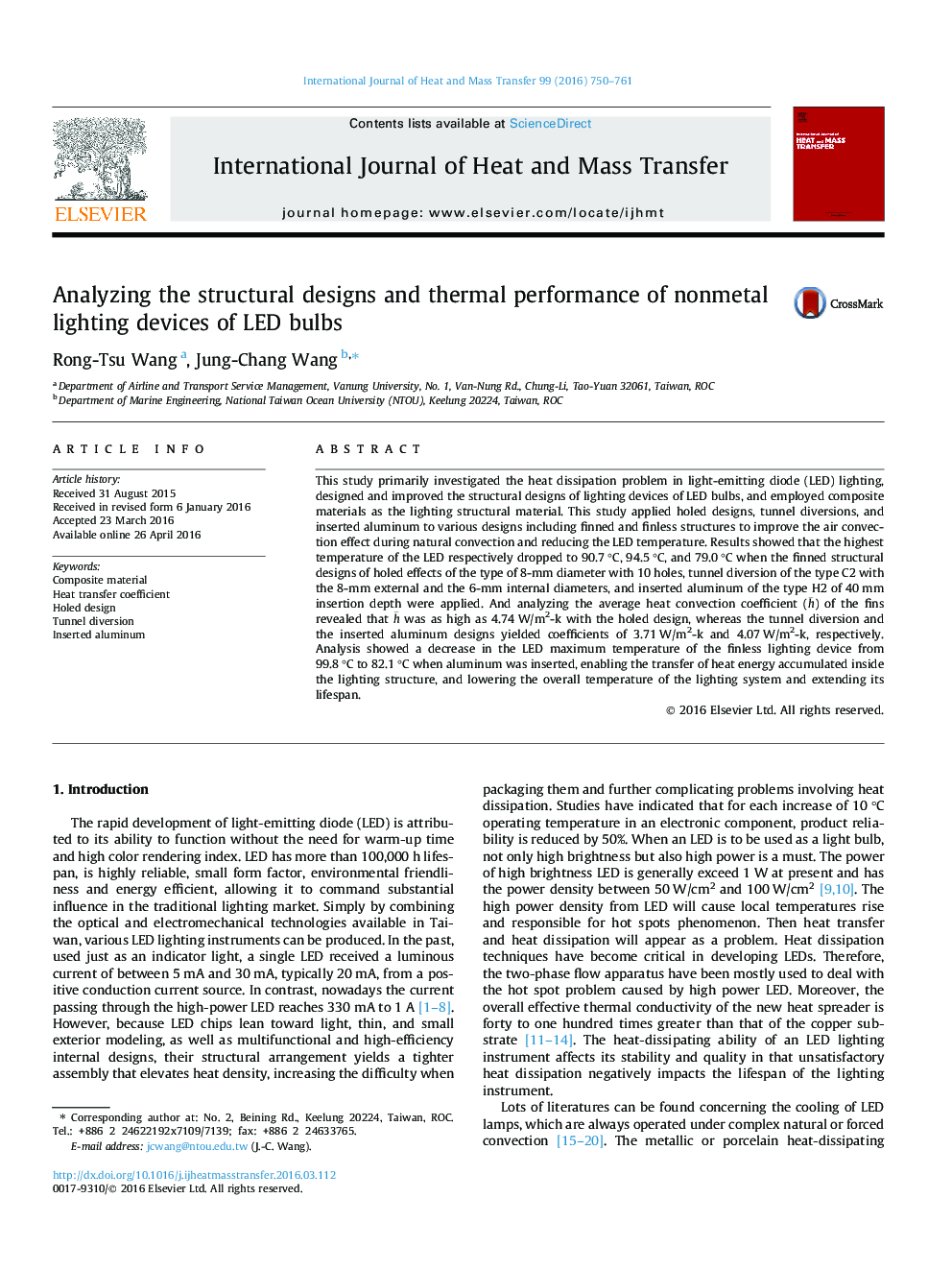| کد مقاله | کد نشریه | سال انتشار | مقاله انگلیسی | نسخه تمام متن |
|---|---|---|---|---|
| 656494 | 1458043 | 2016 | 12 صفحه PDF | دانلود رایگان |
• This study employed nonmetal composite materials in LED lighting bulbs.
• This study applies three kinds of finned structures and finless designs.
• Find the Rayleigh number was 2.3598 × 106 under free convection.
• Optimize the average heat convection coefficient 4.74 W/m2-k with the holed design.
• Showed a decrease in the temperature from 99.81 °C to 82.13 °C of finless design.
This study primarily investigated the heat dissipation problem in light-emitting diode (LED) lighting, designed and improved the structural designs of lighting devices of LED bulbs, and employed composite materials as the lighting structural material. This study applied holed designs, tunnel diversions, and inserted aluminum to various designs including finned and finless structures to improve the air convection effect during natural convection and reducing the LED temperature. Results showed that the highest temperature of the LED respectively dropped to 90.7 °C, 94.5 °C, and 79.0 °C when the finned structural designs of holed effects of the type of 8-mm diameter with 10 holes, tunnel diversion of the type C2 with the 8-mm external and the 6-mm internal diameters, and inserted aluminum of the type H2 of 40 mm insertion depth were applied. And analyzing the average heat convection coefficient (h¯) of the fins revealed that h¯ was as high as 4.74 W/m2-k with the holed design, whereas the tunnel diversion and the inserted aluminum designs yielded coefficients of 3.71 W/m2-k and 4.07 W/m2-k, respectively. Analysis showed a decrease in the LED maximum temperature of the finless lighting device from 99.8 °C to 82.1 °C when aluminum was inserted, enabling the transfer of heat energy accumulated inside the lighting structure, and lowering the overall temperature of the lighting system and extending its lifespan.
Journal: International Journal of Heat and Mass Transfer - Volume 99, August 2016, Pages 750–761
